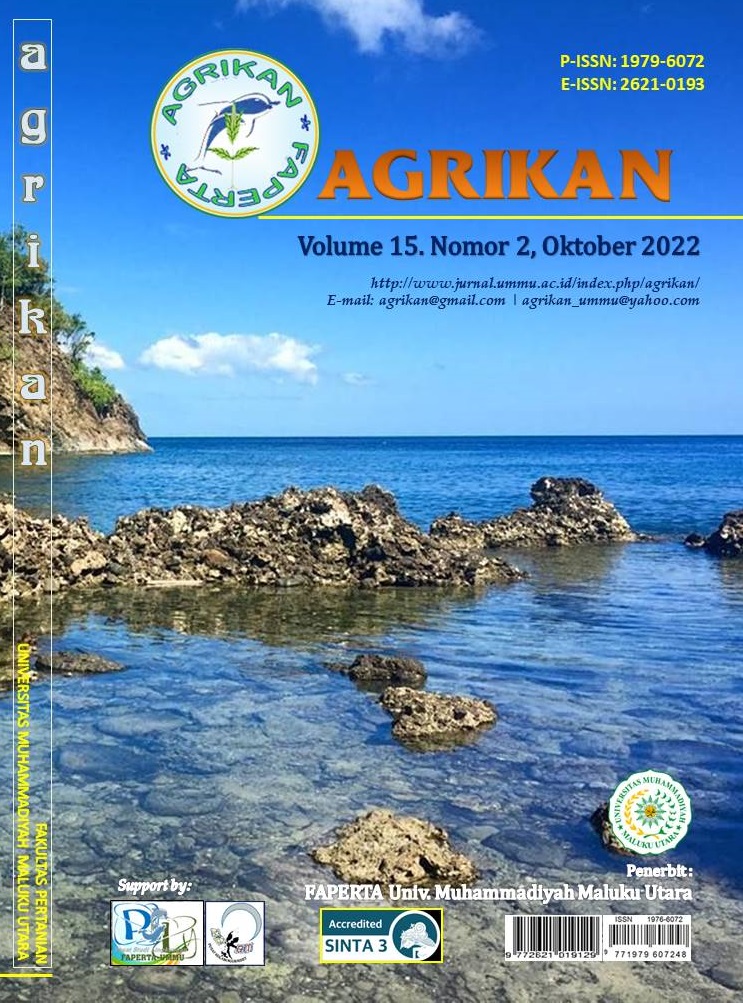Relationship Between the Length-Weight and Gonad Maturity Level of Anabas testudineus Bloch, 1792 in the Kembapi Salt Marshes
DOI:
https://doi.org/10.52046/agrikan.v15i2.1381Keywords:
Anabas testudineus, , length-weight relationship, LGM, salt marshes, KembapiAbstract
The study was conducted in August to October 2018, aiming to determine the growth pattern, the level of maturity of the gonads of betik fish in the salt marshes of Kambapi, Merauke Regency.The analysis used was in the form of a relationship between length of weight, factor condition, sex ratio and level of gonadal maturity of Anabas testudineus.During the study period 749 individual (568 males and 181 females) were collected in Anabas testudineus. Growth patterns of male and female Anabas testudineus show isometric growth patterns (b = 3). Level of gonadal maturityIn general, LGM dominates at level II (41.62%) and the lowest from LGM V (0.28%).For male fish, it dominates from LGM II (48.50%), fish is the highest percentage of LGM I (31.35%).Based on the percentage of GLM during the study period, it was shown that betik fish caught as a whole were not yet gonadal immature.
Downloads
Published
Issue
Section
License
Copyright (c) 2022 Modesta Ranny Maturbongs, Siti Masiyah, Charles Masela

This work is licensed under a Creative Commons Attribution 4.0 International License.

This work is licensed under a Creative Commons Attribution 4.0 International License.













